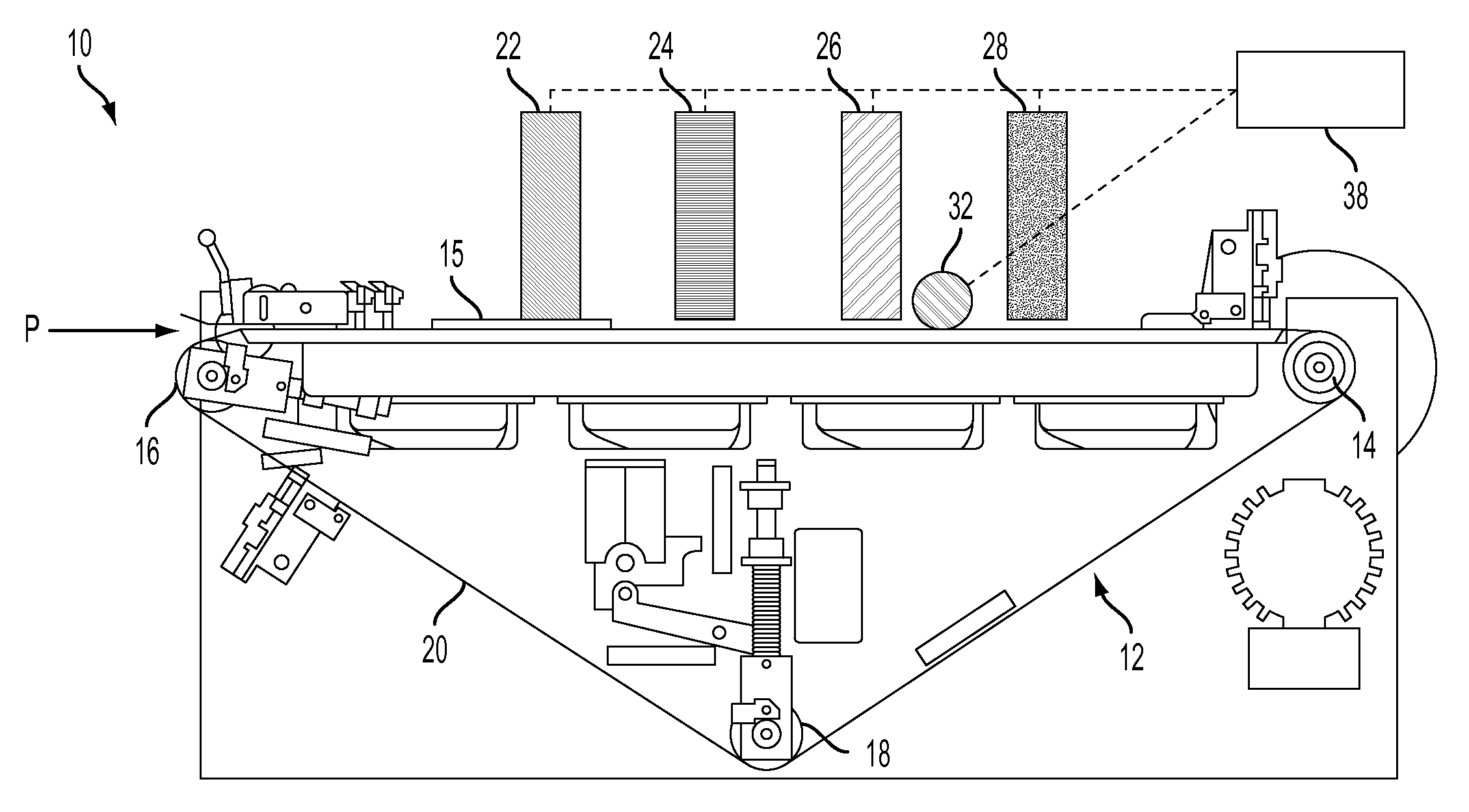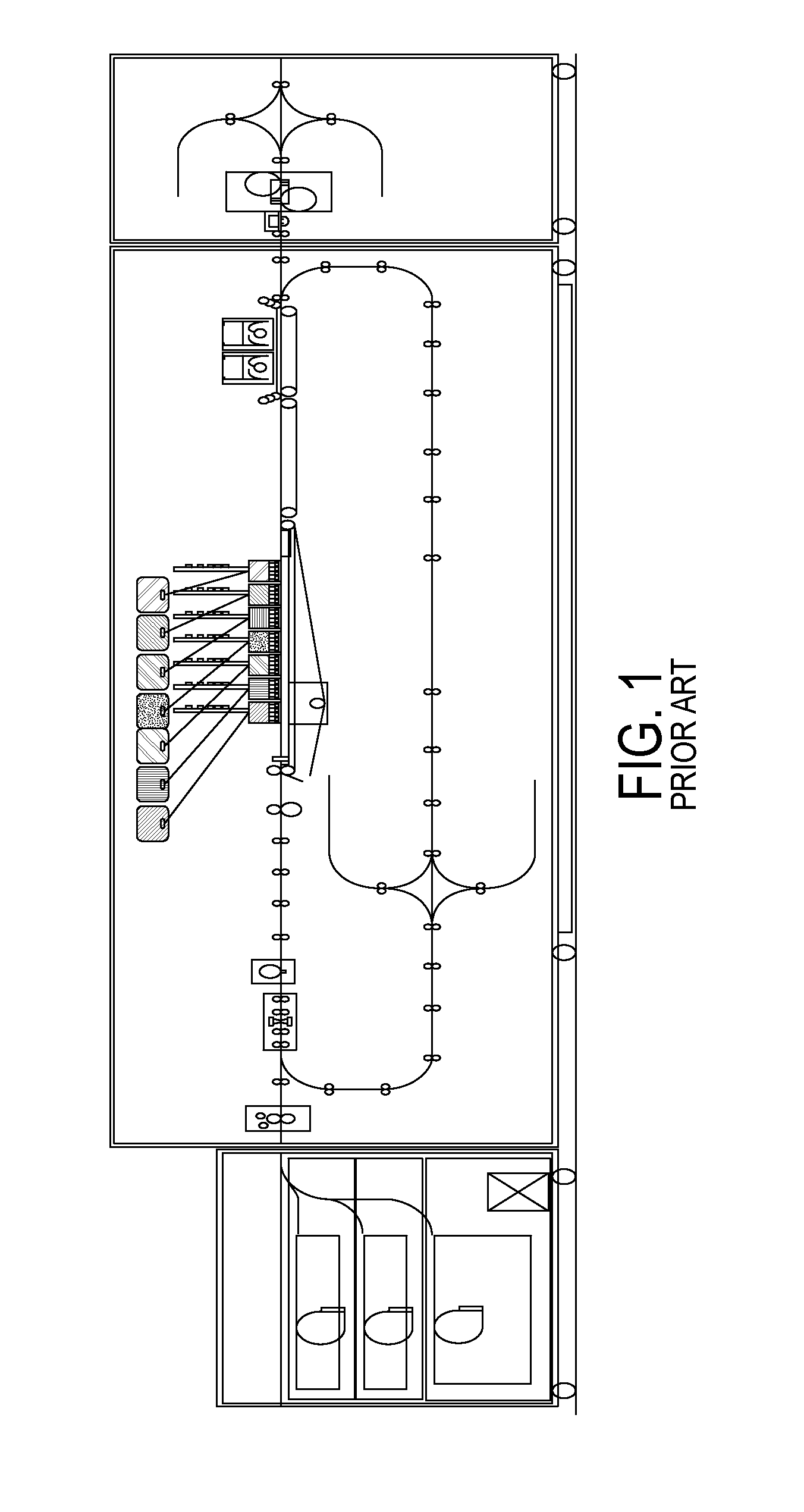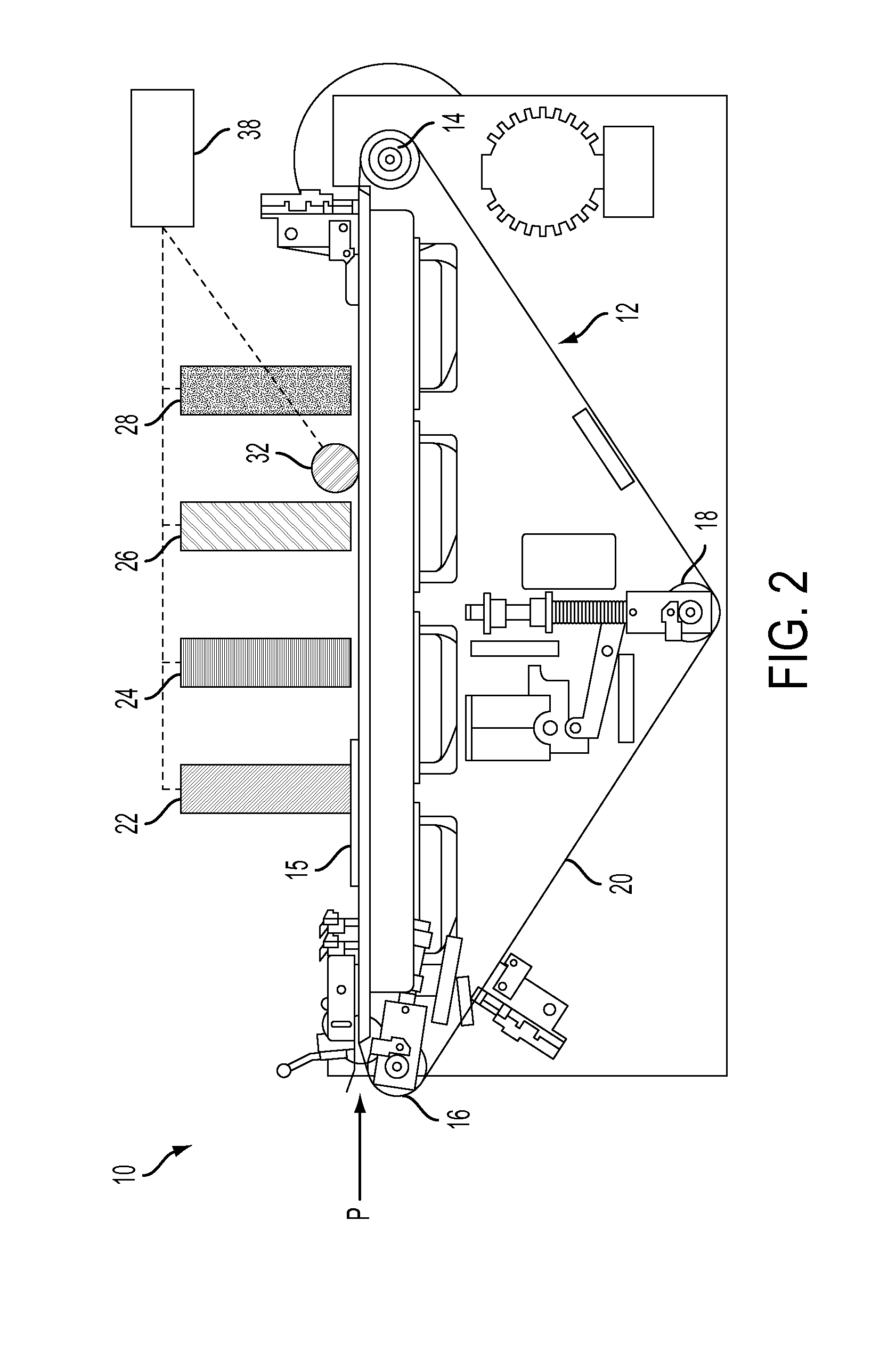Image quality by printing frequency adjustment using belt surface velocity measurement
a belt surface velocity and printing frequency technology, applied in printing, other printing apparatus, etc., can solve problems such as color registration errors, image quality defects, and print image defects, and achieve the effect of improving image quality
- Summary
- Abstract
- Description
- Claims
- Application Information
AI Technical Summary
Benefits of technology
Problems solved by technology
Method used
Image
Examples
example 1
[0035]Data were collected using a belt surface roll-mounted encoder, which has a tracking wheel mounted to the end of a rotatable shaft. The tracking wheel is loaded directly against the belt and measures the velocity of the belt when it moves.
[0036]Although the printing frequency is proportional to belt surface velocity, the validation data is represented in terms of positional information, which represents color-to-color registration errors. It also more clearly demonstrates the contribution of longer wave length, smaller errors. The positions were calculated as the integral over time of the measured velocity minus its average velocity over a certain time interval (about 58 seconds). The results are shown in FIG. 6.
[0037]The surface encoder position A shows the contributions from all error sources, including roll / wheel errors, belt thickness variations and belt drive servo errors. Roll / wheel errors are typically due to eccentricity of roll / wheels, mounting error, etc. These types ...
example 2
[0040]Estimates to determine the approximate color-to-color registration errors using different design, measurement and compensation approaches (based on estimated magnitudes of error sources) were generated based on historical test results. Some of the estimates assumed synchronous design rules, wherein the circumference of the drive roll is an integer multiple of the spacing (S) (see FIG. 3.) between adjacent print heads. This can require a larger printing system and result in less efficient space utilization (i.e., size of the system). The following six different printing systems were estimated to determine the approximate registration error in microns.
[0041]1. Constant velocity transport using non-synchronous design rules.
[0042]2. Constant velocity transport using synchronous design rules.
[0043]3. Reflex printing based on drive roll encoder using non-synchronous design rules.
[0044]4. Reflex printing based on drive roll encoder using synchronous design rules.
[0045]5. Reflex print...
PUM
 Login to View More
Login to View More Abstract
Description
Claims
Application Information
 Login to View More
Login to View More - R&D
- Intellectual Property
- Life Sciences
- Materials
- Tech Scout
- Unparalleled Data Quality
- Higher Quality Content
- 60% Fewer Hallucinations
Browse by: Latest US Patents, China's latest patents, Technical Efficacy Thesaurus, Application Domain, Technology Topic, Popular Technical Reports.
© 2025 PatSnap. All rights reserved.Legal|Privacy policy|Modern Slavery Act Transparency Statement|Sitemap|About US| Contact US: help@patsnap.com



